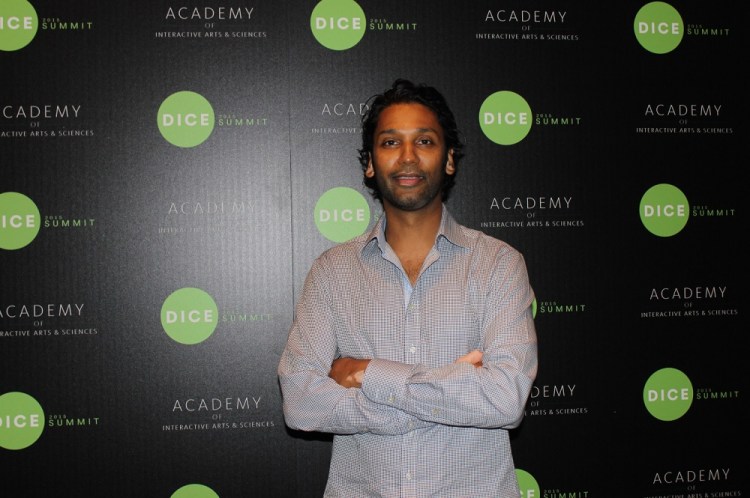The Order: 1886 is going to be one of Sony’s major games for 2015 when it launches for PlayStation 4 on Feb. 20. If all goes well, it could be one of the company’s next big franchises, like Uncharted or The Last of Us.
I’d love to see this game live up to its previews. It has great 3D graphics, including realistic human faces and incredibly detailed imagery of London in 1886. It’s also got an interesting story and fleshed-out characters, such as the order of knights who keep the world safe from half-breed monsters.
Irvine, Calif.-based Ready At Dawn Studios, the developer of The Order: 1886, made the game over four years, after years of working on secondary titles such as ports of the Daxter and God of War franchises to Sony’s portable devices. Ready At Dawn recently announced that it had finally finished the code for the game.
Ru Weerasuriya, the chief executive and creative director at Ready At Dawn Studios, spoke at the DICE Summit — the elite game industry event last week in Las Vegas — about the challenge of staying alive as an independent triple-A game studio and the need for universities to train students for the real world of game creation.
Here’s an edited transcript of our conversation.
GamesBeat: Your talk was interesting. You said you wanted to see better curricula in colleges to prepare people for the kind of jobs you have?
Ru Weerasuriya: Some schools are doing it right, but the reality of education right now on the gaming side seems like it’s very weak, weakly structured. I see a lot of guys starting out, getting out of school, who aren’t ready for jobs. They lack the foundations of traditional art. You need that in so many disciplines.
Right now so many schools are just saying, “You should specialize. Specialize as much as you can.” So they specialize and then they come here to work and you have these guys who are good at one thing they can do, but they need to be supervised 24/7 because you can’t just allow them the freedom to do whatever they want. They don’t have the tools to use that freedom. There’s a disconnect between education for games and what we need from graduates.
GamesBeat: I wonder about some kinds of schools. [University of Southern California] seems to at least have these upper-division classes with large teams. The people on those large teams learn to find different roles within really big projects. That seems like one good way to do it.
Weerasuriya: Like I said, some schools are doing the right thing and taking their own approach. But they’re also asking a lot of advice from people in the game industry. USC is a good example. Champaign has reached out to a lot of people. Southern Methodist University does the same thing. But the problem is that those are the exceptions. USC, in so many ways, is doing a great job. They’re providing a lot of what we need in the industry. But when you consider the number of schools there are in the states and the number that have a game curriculum — enticing kids to say, “It’s a career, come study here and you’ll get a job” – I don’t think they’re prepared to give those kids the education we need.
GamesBeat: How many people do you have working for you now?
Weerasuriya: Overall about 120, but that includes some contractors that we use.
GamesBeat: How many worked on The Order?
Weerasuriya: All of them, working for about four years. Four years exactly, in fact.
GamesBeat: What were some of the lessons from that process?
Weerasuriya: My God. Never underestimate what you have to do on a game. It doesn’t matter if it’s a PS4 game or a PSP game. You always start high, big, and then you realize you have to make the game manageable. I don’t think we’ll ever change that. It’s the way we work as a team. But the takeaways, more than anything, are about the things we did tackle well, the things we’d like to tackle better, the things we learned along the way on the technology side and on the design side, the gameplay mechanics, navigation. There are things we wanted to put in, but never did. The takeaway is that this is a first step into a lot of things we want to do. It’s cool to put it out because we needed this in order to build on it.



